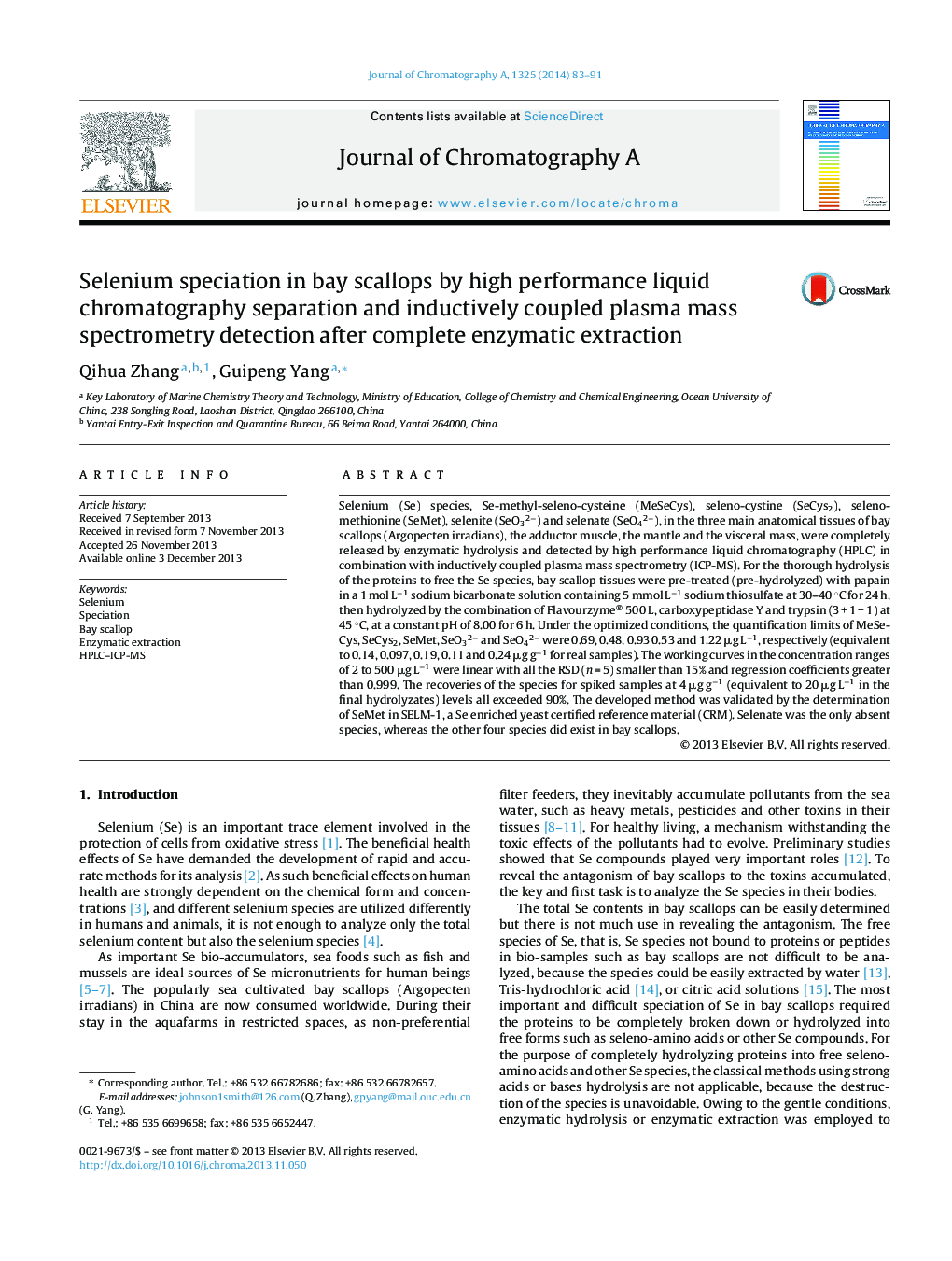| کد مقاله | کد نشریه | سال انتشار | مقاله انگلیسی | نسخه تمام متن |
|---|---|---|---|---|
| 1200420 | 1493601 | 2014 | 9 صفحه PDF | دانلود رایگان |
• Tissues pre-treated by papain in sodium bicarbonate enabled easy enzymatic extraction.
• Complete hydrolysis by Flavourzyme® 500 L, carboxypeptidase Y and trypsin (3 + 1 + 1).
• Sodium thiosulfate assured the integrity of selenium species satisfactorily.
• Bay scallops are good sources of selenium species.
Selenium (Se) species, Se-methyl-seleno-cysteine (MeSeCys), seleno-cystine (SeCys2), seleno-methionine (SeMet), selenite (SeO32−) and selenate (SeO42−), in the three main anatomical tissues of bay scallops (Argopecten irradians), the adductor muscle, the mantle and the visceral mass, were completely released by enzymatic hydrolysis and detected by high performance liquid chromatography (HPLC) in combination with inductively coupled plasma mass spectrometry (ICP-MS). For the thorough hydrolysis of the proteins to free the Se species, bay scallop tissues were pre-treated (pre-hydrolyzed) with papain in a 1 mol L−1 sodium bicarbonate solution containing 5 mmol L−1 sodium thiosulfate at 30–40 °C for 24 h, then hydrolyzed by the combination of Flavourzyme® 500 L, carboxypeptidase Y and trypsin (3 + 1 + 1) at 45 °C, at a constant pH of 8.00 for 6 h. Under the optimized conditions, the quantification limits of MeSeCys, SeCys2, SeMet, SeO32− and SeO42− were 0.69, 0.48, 0.93 0.53 and 1.22 μg L−1, respectively (equivalent to 0.14, 0.097, 0.19, 0.11 and 0.24 μg g−1 for real samples). The working curves in the concentration ranges of 2 to 500 μg L−1 were linear with all the RSD (n = 5) smaller than 15% and regression coefficients greater than 0.999. The recoveries of the species for spiked samples at 4 μg g−1 (equivalent to 20 μg L−1 in the final hydrolyzates) levels all exceeded 90%. The developed method was validated by the determination of SeMet in SELM-1, a Se enriched yeast certified reference material (CRM). Selenate was the only absent species, whereas the other four species did exist in bay scallops.
Journal: Journal of Chromatography A - Volume 1325, 17 January 2014, Pages 83–91
